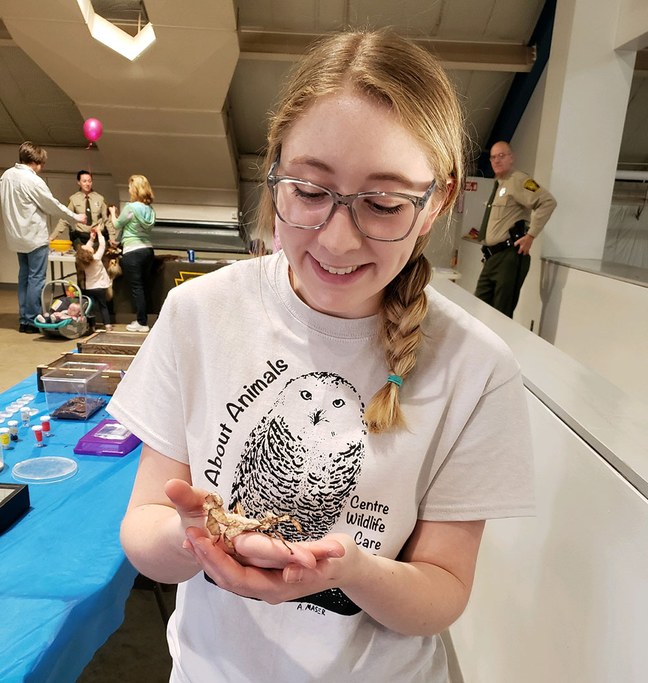Makaylee Crone, a PhD student in the Grozinger and Biddinger labs

Makaylee Crone
In recent years, the scientific world has been abuzz with research regarding the declines in important pollinating species, especially in honey bees. These declines have been linked to poor nutrition, parasites, infections, and exposure to pesticides. While much of this research is focused on finding what is causing the decline in pollinators and often points to pesticide use, the solutions have been few and far between. Makaylee Crone, a PhD student in the Grozinger and Biddinger labs, is determined to find practical solutions that can benefit many stakeholders. As a potential future management strategy, Makaylee is hoping to identify the ideal diet of honey bees in an effort to help mitigate the effects of pesticide exposure.
While pesticides are an important part of many agricultural pest management systems, they have been linked to morbidity and mortality in pollinator species, including in honey bees. While it is important to understand what is causing the decline in pollinating species, these studies often do not propose manageable solutions but instead focus on the negative effects of pesticides. Oftentimes banning a specific class, or several classes, of pesticides is proposed as a solution to increase pollinator populations and survival.
However, to grow the quantity and quality of food that consumers desire, it is not feasible to ban the use of all pesticides in modern agricultural systems: as Makaylee succinctly stated, "We can't just ban everything, we need food!." To this end, Makaylee's research is focused on finding the ideal honey bee diet in hopes that when provided this diet, honey bees are better able to detoxify pesticides and have higher survival.
 In initial experiments conducted last summer to determine this ideal diet, Makaylee fed honey bees three different pollen diet types, one that was lipid-rich, one that was protein-rich, and one that was unaltered. She then chronically exposed the honey bees to the pesticide chlorpyrifos for 18 days. She recorded honey bee mortality within each diet group and found that the lipid-rich treatment group had the lowest mortality rate of the three groups and that it was not significantly different than the non-pesticide treated group, revealing that it may confer protection against pesticide exposure. Additionally, these results suggest that lipids are more important than a diet high in protein for pesticide resilience.
In initial experiments conducted last summer to determine this ideal diet, Makaylee fed honey bees three different pollen diet types, one that was lipid-rich, one that was protein-rich, and one that was unaltered. She then chronically exposed the honey bees to the pesticide chlorpyrifos for 18 days. She recorded honey bee mortality within each diet group and found that the lipid-rich treatment group had the lowest mortality rate of the three groups and that it was not significantly different than the non-pesticide treated group, revealing that it may confer protection against pesticide exposure. Additionally, these results suggest that lipids are more important than a diet high in protein for pesticide resilience.
Future work will be focused on determining varying lipid to protein ratios in the pollen diet to find a ratio that confers the greatest protection against the pesticides tested. Once this ideal ratio is known, this data could be used to determine flowers that have this approximate ratio, which then could be planted in areas critical to honey bee populations. This information could also be used to provide packaged diets to beekeepers, as a pollen diet composed of the ideal ratio of protein to lipid content could provide the fuel honey bees need to combat these stressors. Similar to a sports gel given to marathoners, this ideal diet could be packaged and given to honey bees to power them through the race of life, offering a better chance at survival. With preliminary results already showing great promise, pollinators everywhere should bee thankful Makaylee Crone is on the case!
By Hannah Greenberg

